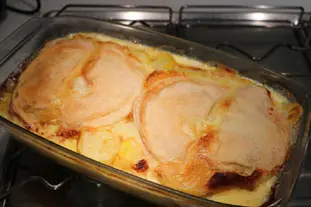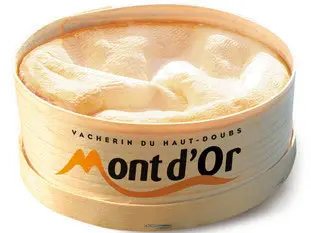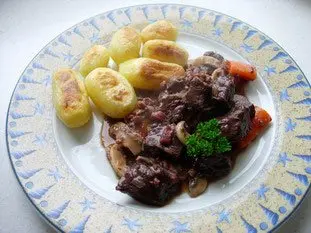This site uses only a few technical cookies necessary for its operation. By continuing to browse, you accept their use.
To find out more...
To find out more...
Markers in cooking

When it comes to cooking, there is only one real rule, and that is that there are no rules!
By that I mean that everything is possible, everything can be combined, everything or almost everything can go with everything, but you have to like it, you have to find it good.
I have friends who regularly make brown sugar pasta, just the idea makes me jump up and down, but they love it, I respect that, tastes are not debatable!
That's why the dogmas, or the canons of cooking can be shaken up when you cook and at any time, in other words you make a recipe of this and you want to put that in it? But why not, nothing should stop you, if you like it.
By that I mean that everything is possible, everything can be combined, everything or almost everything can go with everything, but you have to like it, you have to find it good.
I have friends who regularly make brown sugar pasta, just the idea makes me jump up and down, but they love it, I respect that, tastes are not debatable!
That's why the dogmas, or the canons of cooking can be shaken up when you cook and at any time, in other words you make a recipe of this and you want to put that in it? But why not, nothing should stop you, if you like it.
12 K 5/5 (16 reviews)
Keywords for this post:CookingTasteMarkersEssentialLast modified on: July 3rd 2021
Markers in cooking
Of course, if you deviate from the basics of a typical recipe, it would be better not to call it by its original name, and especially not to publish it anywhere, as you might get a lot of flak if some guardians of the recipe in question spot you.
Basically, it's potatoes slices cooked in water, put in a gratin dish with a mix of onion, lardons and dry white wine, from Savoie if possible, cooked separately, the whole thing is topped with fresh cream and covered with half-reblochons before being put to gratinate.
A pure winter delight.
All this to tell you that we can, with a certain look, define what the cooks/pastry cooks call the markers of a recipe, that is to say the 2, 3 or 4 or more, indispensable tastes to deserve the name of the original recipe, even if it is completely revisited.
Let's go back to our tartiflette, its markers are: Potato, onion, lardon, Reblochon (or even cream?)
A sweet example, the Black forest cake: chocolate, cream, cherry, kirsch
Tarte tatin: apples, caramel, acidulous
Carbonnade: Beef, beer
Bœuf bourguignon: Beef, red wine, carrots
etc. etc.
You can see that it's sometimes quite simple to determine, sometimes a bit more tricky ( cassoulet?), but it allows you to target a recipe you want to revisit while keeping its tastes and therefore its spirit, and at the same time to allow yourself one or two liberties by changing 1 or 2 markers. I say 1 or 2, because beyond that you risk doing something completely different, which is not dramatic either, but it will probably not deserve the original name.
To sum up: The markers of a recipe, i.e. its essential basic tastes that characterize it, allow you to know if, when revisiting or adapting it, you are still in the spirit of it, or if you are doing something very different, which may not fit with the original name. But who cares if you like it...

Basically, it's potatoes slices cooked in water, put in a gratin dish with a mix of onion, lardons and dry white wine, from Savoie if possible, cooked separately, the whole thing is topped with fresh cream and covered with half-reblochons before being put to gratinate.
A pure winter delight.

All this to tell you that we can, with a certain look, define what the cooks/pastry cooks call the markers of a recipe, that is to say the 2, 3 or 4 or more, indispensable tastes to deserve the name of the original recipe, even if it is completely revisited.
Let's go back to our tartiflette, its markers are: Potato, onion, lardon, Reblochon (or even cream?)
A sweet example, the Black forest cake: chocolate, cream, cherry, kirsch
Tarte tatin: apples, caramel, acidulous
Carbonnade: Beef, beer
Bœuf bourguignon: Beef, red wine, carrots

etc. etc.
You can see that it's sometimes quite simple to determine, sometimes a bit more tricky ( cassoulet?), but it allows you to target a recipe you want to revisit while keeping its tastes and therefore its spirit, and at the same time to allow yourself one or two liberties by changing 1 or 2 markers. I say 1 or 2, because beyond that you risk doing something completely different, which is not dramatic either, but it will probably not deserve the original name.
To sum up: The markers of a recipe, i.e. its essential basic tastes that characterize it, allow you to know if, when revisiting or adapting it, you are still in the spirit of it, or if you are doing something very different, which may not fit with the original name. But who cares if you like it...
Lasts posts
Butter vs. grease
We often read in a recipe where a pastry is put into a mould that, just before pouring, the mould should be buttered or greased. But what's the difference between these 2 terms?December 1st 20259985
Getting out of the fridge early
Very often when you're cooking, you need to take food or preparations out of the fridge, to use them in the recipe in progress. There's nothing tricky about this: you just take them out of the fridge and use them, usually immediately, in the recipe. But is this really a good method?November 24th 20251,1275
Who's making the croissants?
When you look at a bakery from the outside, you naturally think that in the bakery, the bakers make the bread, and in the laboratory, the pastry chefs make the cakes. It's very often like that, with each of these professions having quite different ways of working, but sometimes there's also one...November 23th 20251,020
Oven height
When we put a dish or cake in the oven, we naturally tend to put it on the middle shelf, and that's what we usually do. But in some cases, this position and height can be a little tricky, so let's find out why.October 8th 20252,7685
The importance of sieving
In recipes that use a fine powder (flour, powdered sugar, etc.), you'll often see the advice to sift before using it. To sift is to pass the powder in question through a sieve (a very fine strainer) before incorporating it into your recipe. It's often advice, but is it really useful?September 3rd 20257,5373
Other pages you may also like
A few tips for effective kneading at home
When you have to knead dough for bread or some other recipe, you may well use a food processor or the type of machine known as a stand mixer. The best-known brands are Kenwood and KitchenAid. They are useful tools, but here are a few tips to help you get the best out of them.June 23th 2021284 K 23.8
Stand mixer tools
Whether we call it a stand mixer, food processor, or simply refer to it by brand (Kenwood, KitchenAid, etc.), this machine is a valuable tool for amateur cooks, bakers or pastry chefs like ourselves. All these machines come supplied with 3 different tools. Let’s take a look at their names and...November 2nd 201938 K4.5
Fruits which can ruin your jelly
There are many ways of making a fruit mousse, but one of the simplest is to prepare a fruit jelly (basically a fresh fruit coulis with gelatine) and then mix this jelly before it sets completely with whipped cream. The result is perfect for filling a charlotte, for example. But do beware;...March 6th 201378 K4.0
Candied fruits: don't get ripped off
Do you like candied fruit? You might like to nibble a handful or add it to a recipe, like a classic fruit cake or delicious Italian specialities like panettone or sicilian epiphany pie.June 21th 201767 K 24.2
The golden-brown finish on puff pastry
Let's take a look at the tricky matter of producing puff pastry with an attractive, golden-brown finish. French pastry chefs call this "dorure" (literally, "gilding"). Behind this quirky term there lurks a real problem (and the solution): when using puff pastry (pâte feuilletée) for a pie, or...February 8th 201847 K 24.6
Post a comment or question
Follow this page
If you are interested in this page, you can "follow" it, by entering your email address here. You will then receive a notification immediately each time the page is modified or a new comment is added. Please note that you will need to confirm this following.
Note: We'll never share your e-mail address with anyone else.
Alternatively: you can subscribe to the mailing list of cooling-ez.com , you will receive a e-mail for each new recipe published on the site.









